MIST
Magnetosphere, Ionosphere and Solar-Terrestrial
Nuggets of MIST science, summarising recent papers from the UK MIST community in a bitesize format.
If you would like to submit a nugget, please fill in the following form: https://forms.gle/Pn3mL73kHLn4VEZ66 and we will arrange a slot for you in the schedule. Nuggets should be 100–300 words long and include a figure/animation. Please get in touch!
If you have any issues with the form, please contact This email address is being protected from spambots. You need JavaScript enabled to view it..
Design and Optimization of a High-Time-Resolution Magnetic Plasma Analyzer (MPA)
By Benjamin Criton (Mullard Space Science Laboratory, UCL)
Cutting-edge solar wind investigations require in-situ instruments with increasing time and energy resolution to study the important small-scale plasma processes. These processes play key roles in the overall behaviour of space plasmas. They are believed to be the origin of the heating and acceleration of the solar wind. Unfortunately, these processes happen on very short timescales. To measure them, virtually all flown plasma analyzers use an approach to select particle energies, achieved by an electric field. Faraday cups use a high-pass energy selection whilst electrostatic analysers (ESAs) a band-pass selection. This functioning requires to sweep the energy range to build the entire energy spectrum of the measured plasma. Even though Faraday cups are comparatively faster than ESAs, these two instrument categories make relatively slow measurements: 4 s for Cluster HIA, 1 s for Solar Orbiter PAS or 0.22 s for Parker Solar Probe SPC.
In this article, we conceptualize and design a plasma analyzer answering this rising demand for high time and energy resolution. Our new design, based on the velocity-dependent deflection of charged particles in a homogeneous magnetic field, does not require any time-dependent energy selection, making measurements much faster and reliable compared to traditional analyzers. Particles hit a position-sensitive sensor at different positions according to their velocity and mass-per-charge ratio. In one acquisition step, each incoming charged plasma particle is detected at a specific position in the sensor plane. We then translate the counts per position into an estimation of the velocity distribution function (VDF). Our study shows that this measurement principle achieves a 1D measurement of proton and alpha-particle VDFs under realistic solar wind conditions in 5 ms (200 Hz) with a velocity resolution of 2.8 %. This time cadence is two orders of magnitudes faster than the sampling frequency required to measure processes of order the proton gyro-radius at a heliocentric distance of 1 au and about 40 times faster than Parker Solar Probe SPC’s native cadence. Furthermore, the velocity/energy resolution only depends on the physical instrument parameters (aperture size, pixel size and magnetic field strength) that can be adjusted to best address the trade-off between time and energy resolution.
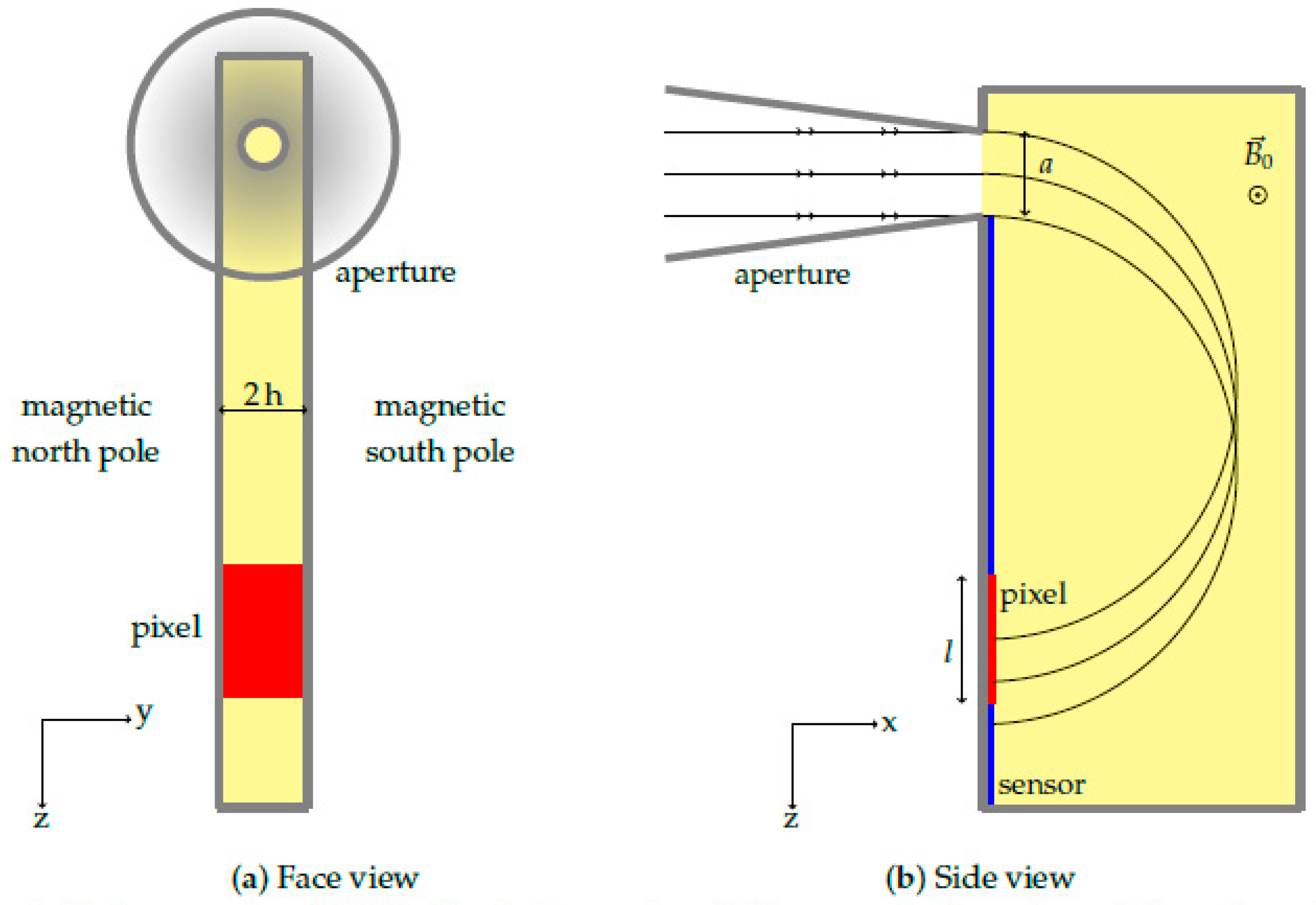
Fig. 1 shows the conceptual geometry of the instrument. This new instrument concept is able to unveil the fast variations of the ion VDFs in one look direction.
Please see the paper for full details:
Criton B, Nicolaou G, Verscharen D. (2020). Design and Optimization of a High-Time-Resolution Magnetic Plasma Analyzer (MPA). Applied Sciences. 10(23):8483. https://doi.org/10.3390/app10238483
Evaluating the performance of a plasma analyzer for a space weather monitor mission concept
By Georgios Nicolaou (Mullard Space Science Laboratory/UCL; Southwest Research Institute)
Georgios Nicolaou et al. developed a forward model of an electrostatic analyzer response which simulates observations of solar wind protons with their velocities following the classic Maxwell distribution function. This paper studies the observations of extreme space weather features such as, fast ICMEs and fast solar wind streams, but also the observations of a typical background solar wind. The model takes into account the limited sampling and resolution of the instrument. The analysis of the modeled observations derives the plasma parameters from the statistical moments of the observed velocity distribution functions. This is a classic novel analysis method, which is appropriate for space weather missions as it can be applied onboard spacecraft and predict the solar wind plasma bulk parameters very fast, reducing the required telemetry and computational resources. The comparison between the analysis results and the input parameters identifies the accuracy of the specific method applied to the observations by the instrument. The authors address the limitation of the moments analysis and demonstrate how we can overcome these limitations by fitting the observations with distribution function models. The fitting analysis is demonstrated in observations of fast ICMEs (see Figure 1) and fast solar wind streams identified in ACE observations.
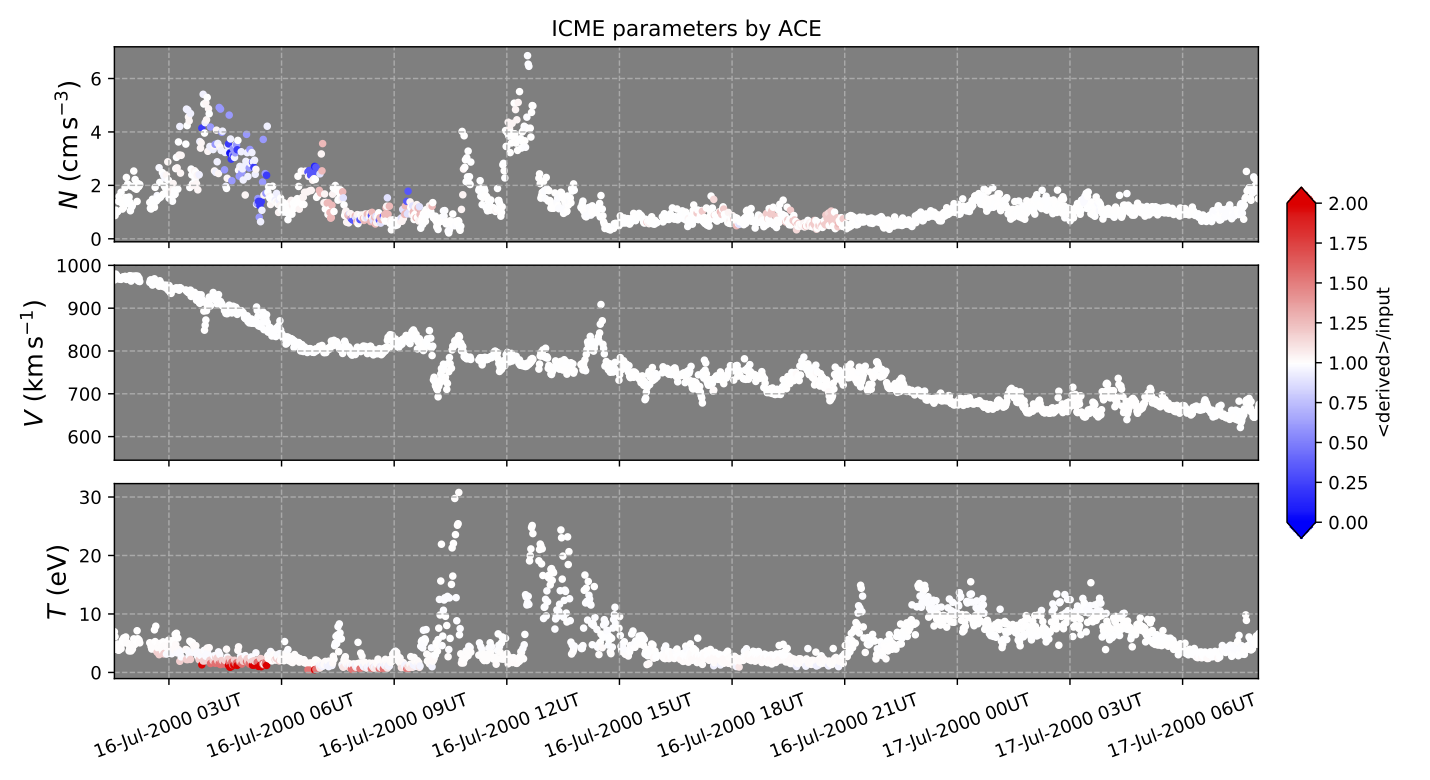
Figure 1. Time series of (top) the plasma density, (middle) bulk speed, and (bottom) scalar temperature within a fast ICME recorded by ACE from 16 July 2000 01:00 to 17 July 2000 08:00. The color represents the accuracy with which the fitting analysis of the observations by our instrument derives the corresponding parameters.
Please see the paper for full details:
, , , & (2020). Evaluating the performance of a plasma analyzer for a space weather monitor mission concept. Space Weather, 18, e2020SW002559. Accepted Author Manuscript. https://doi.org/10.1029/2020SW002559
The Global Distribution of Ultra‐Low‐Frequency Waves in Jupiter's Magnetosphere
By Arthur Manners (Imperial College London)
A key component to an understanding of Jupiter’s magnetosphere is how energy and momentum are transported through the system; how are perturbations communicated to regions many thousands of Earth radii distant? In the terrestrial magnetosphere, magnetohydrodynamic (MHD) waves with frequencies in the ultra-low-frequency band (~1mHz – 1Hz) play a key role in communication throughout the system, in some cases causing the magnetospheric cavity to resonate at its natural frequencies. The Jovian magnetosphere also seems to exhibit these phenomena but limited in-situ data has prevented a fuller picture from emerging. To remedy this, we have searched the heritage magnetometer data from Galileo, Ulysses, Voyager 1 & 2 and Pioneer 10 & 11 for ULF waves. The large plasma density in the equatorial magnetodisk and comparatively rarefied high-latitude regions means the Alfvén speed is orders of magnitude lower in the disk than elsewhere, effectively confining waves to the centremost region of the magnetic field lines.
We focused our study to data where spacecraft traversed the magnetodisk and constructed a catalogue of large-amplitude ULF waves. We found several hundred events with periods spanning ~ 5 – 60 mins, with preferential periods at ~ 15 mins, ~ 30 mins and ~ 40 mins, consistent with case studies in the literature. The resultant distribution can be seen in Fig. 1. Regions close to the magnetopause at noon and along the dusk flank appear to host ULF waves most often, suggesting an external driver (Fig. 1a). However, the waves seem to be most powerful in the inner magnetosphere, close to the plasma torus, suggesting wave energy may accumulate in the region (Fig. 1b). Further study of the torus region is ongoing to further probe these findings. Overall, these results provide crucial information into large scale energy transport and pathways in Jupiter's complex magnetosphere, with significant implications for wider magnetospheric processes.
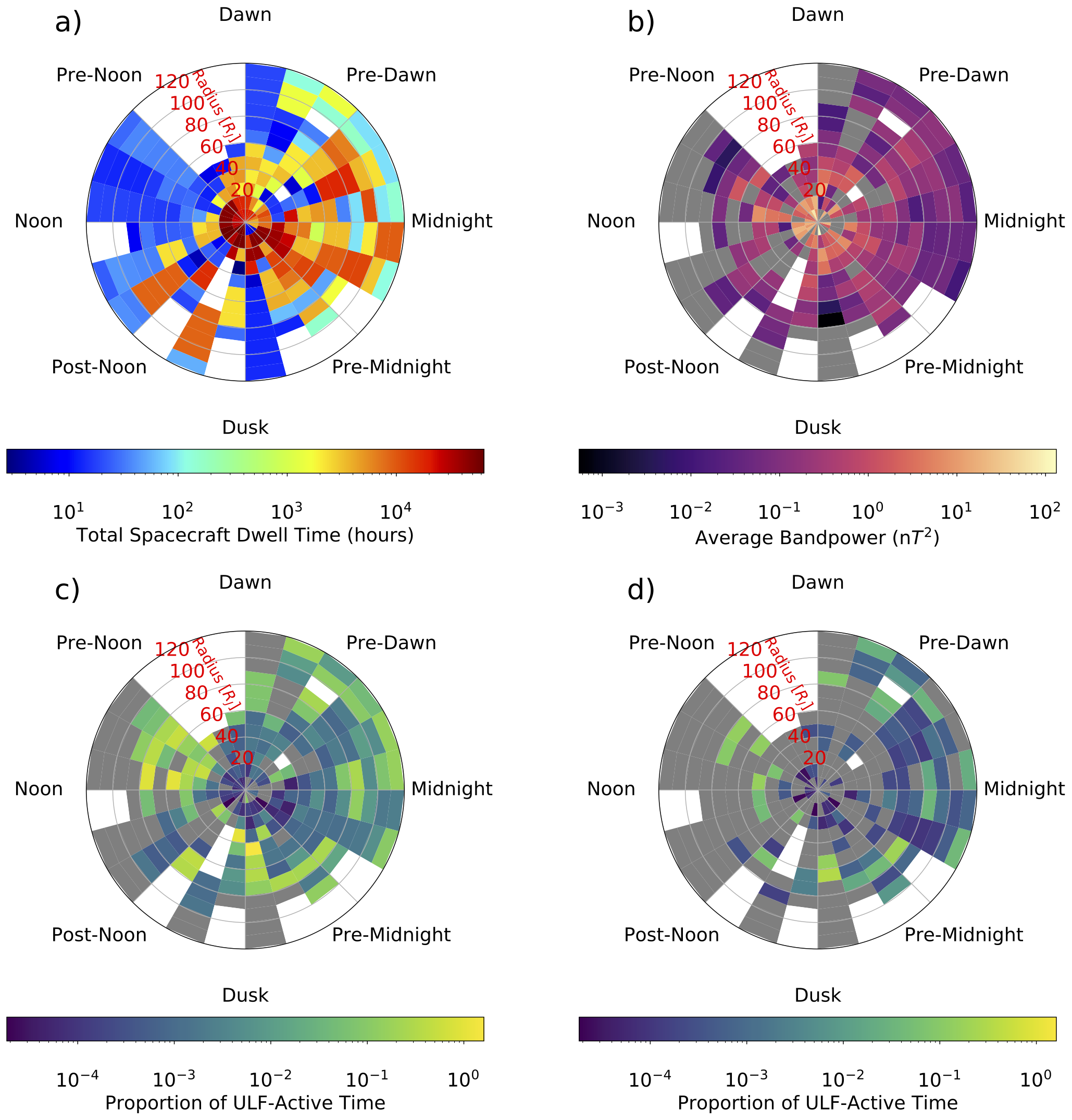
Fig. 1: An equatorial-plane projection of: (a) the total time spacecraft spent in each bin; (b) the ULF bandpower averaged over the events in each bin; (c) the proportion of time spacecraft spent in each region where significant ULF activity was observed; (d) the same as (c) but for the subset of events where only a single significant period was observed. White bins signify where there are no available data, and gray bins signify regions where spacecraft visited but observed no events.
Please see the paper for full details:
, & (2020). The global distribution of ultralow‐frequency waves in Jupiter's magnetosphere. Journal of Geophysical Research: Space Physics, 125, e2020JA028345. https://doi.org/10.1029/2020JA028345
Using Dimensionality Reduction and Clustering Techniques to Classify Space Plasma Regimes
By Mayur R. Bakrania (MSSL, UCL)
Particle populations in collisionless space plasma environments are traditionally characterised by their moments. Distribution functions, however, provide the full picture of the state of each plasma environment. These distribution functions are not easily classified by a small number of parameters. We apply dimensionality reduction and clustering methods to particle distributions in pitch angle and energy space to distinguish between the different plasma regions. Dimensionality reduction is a specific type of unsupervised learning in which data in high-dimensional space is transformed to a meaningful representation in lower dimensional space. This transformation allows complex datasets to be characterised by analysis techniques with much higher computational efficiency. We use the following steps:
- An autoencoder to compress the data by a factor of 10 from a high-dimensional representation.
- A Principal Component Algorithm to further compress the data to a three-dimensional representation.
- The mean shift algorithm to determine how many populations are present in the data using this three-dimensional representation.
- An agglomerative clustering algorithm to assign each data-point to one of the populations.
We use electron data from the magnetotail to test the effectiveness of our method. The magnetotail is traditionally divided into three different regions: the plasma sheet (PS), the plasma sheet boundary layer (PSBL), and the lobes. Starting with the ECLAT database with associated classifications based on the plasma parameters, we identify 8 distinct groups of distributions, that are dependent upon significantly more complex plasma and field dynamics. Fig. 1 shows the average electron differential energy flux distributions for each cluster. We see large differences in the average pitch angle/energy distributions. Each distribution differs by the: peak flux energy, peak flux value, or the pitch angle anisotropy. The lack of identical distributions shows mean shift has not overestimated the number of clusters. This novel technique reveals new information on the physical processes shaping magnetotail electron distributions, and has significant implications for analysing a wide range of plasma regimes.
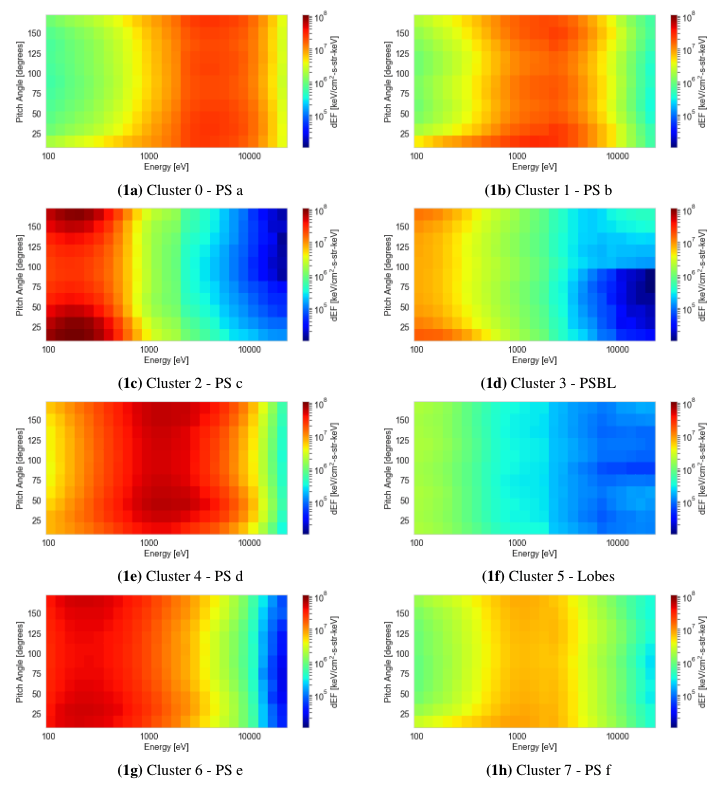
Fig. 1: Average electron differential energy flux distributions as a function of pitch angle and energy for each of the eight clusters (A–H) classified by the agglomerative clustering algorithm. Each cluster is assigned a magnetotail region (included in the sub-captions) based on our interpretation of their plasma and magnetic field parameters.
Please see the paper for full details:
M. R. Bakrania, Rae I. J., Walsh A. P., Verscharen D. and Smith A. W. (2020). Using Dimensionality Reduction and Clustering Techniques to Classify Space Plasma Regimes. Front. Astron. Space Sci. 7:593516. https://doi.org/10.3389/fspas.2020.593516
Polytropic Behavior of Solar Wind Protons Observed by Parker Solar Probe
by Georgios Nicolaou (MSSL, UCL)
The polytropic equation relates the density and temperature of a fluid through the polytropic index. The polytropic index is a crucial parameter in understanding the physical mechanisms acting on the fluid. In this study, we investigate the large time-scale and the short time-scale fluctuations of the plasma proton density and temperature in order to determine their polytropic index. The large time-scale fluctuations which are associated with the plasma expansion within the heliosphere, follow a polytropic model with a polytropic index ~5/3. The specific behavior is consistent with an adiabatic expanding plasma protons with three degrees of freedom. The radial profile of the density follows in general, the model for a spherical expansion with a constant radial speed (see Figure 1). However, the short time-scale fluctuations, which are associated with plasma turbulence, follow a polytropic model with a polytropic index ~2.7. Interestingly, the short time-scale polytropic index is found to be correlated with the interplanetary magnetic field. We discuss the possibly of a mechanism that supplies/retains energy from the plasma protons in these short time-scales, or a mechanism that restricts the effective degrees of freedom of the protons. We finally highlight the importance of future studies that examine the polytropic index along with the characteristics of the full 3D distributions of the plasma ions and electrons.
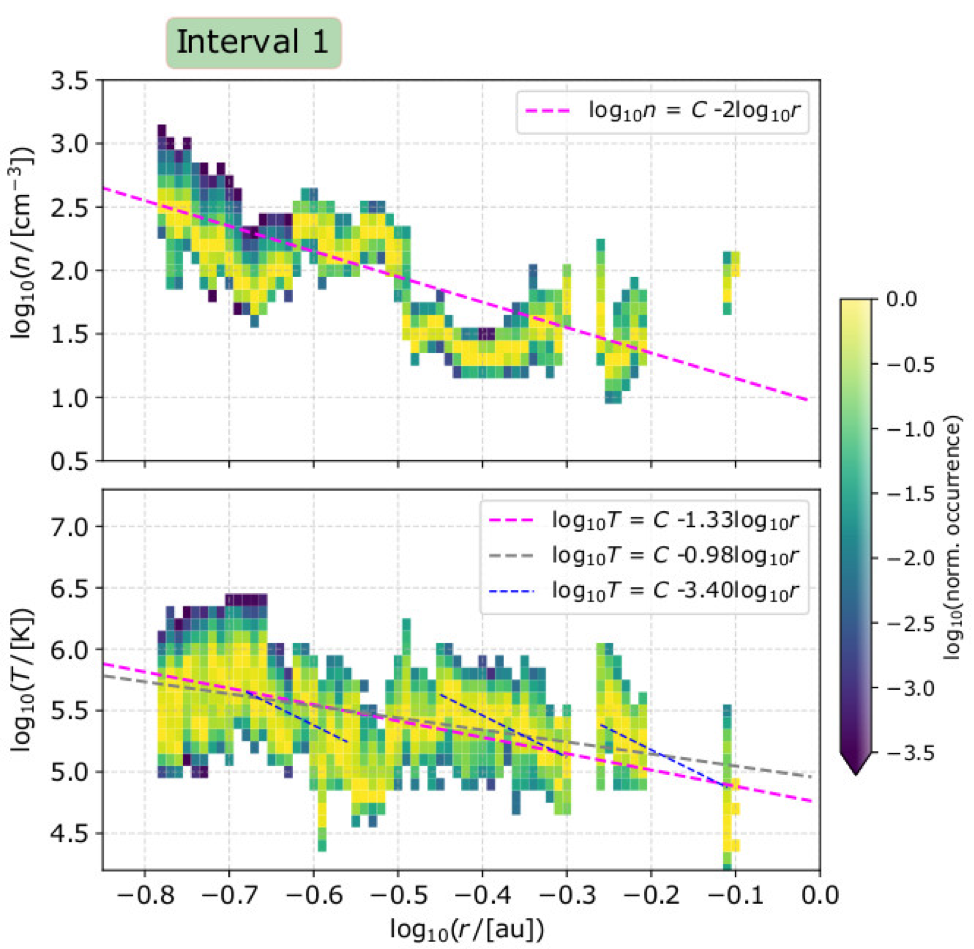
Figure 1. Two-dimensional histograms of (top) the proton density and (bottom) the proton temperature as functions of the radial distance for time interval 1. The magenta line in the top panel shows the expected density for an expansion model with constant speed, n ∝ r-2. In the lower panel, the magenta line shows the expected temperature of a polytropic radial expansion model with γ = 5/3 while the blue lines represent expansion models with γ = 2.7. The grey line illustrates the slope determined by Huang et al. 2020 for the parallel proton temperature of fast solar wind observed by SPC.
Please see the paper for full details:
Nicolaou, G., Livadiotis, G., Wicks, R. T., Verscharen, D., Maruca, B. A., (2020). Polytropic Behavior of Solar Wind Protons Observed by Parker Solar Probe. The Astrophysical Journal, 901, 1, https://doi.org/10.3847/1538-4357/abaaae.